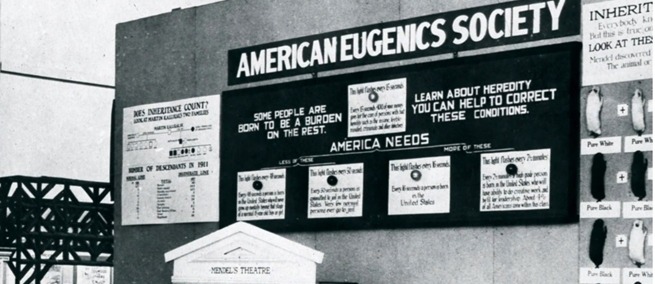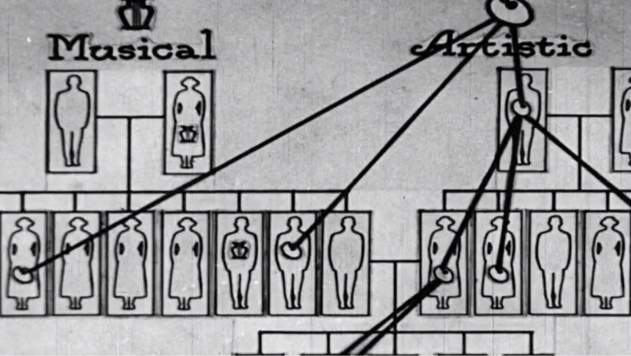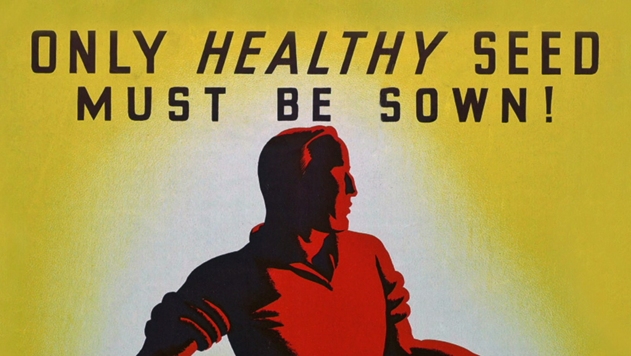
A new documentary on PBS’ “American Experience” explores the history of the eugenics movement, typically attributed to Nazi Germany, in the United States. THE EUGENICS CRUSADE: WHAT’S WRONG WITH PERFECT? is written and directed by Michelle Ferrari and features historians including Dan Kevles, Nathanial Comfort, Wendy Klein, Jonathan Spiro, Christine Rosen, and oncologist and writer Siddhartha Mukherjee. The eugenics movement was an attempt to control human reproduction. The documentary examines what scientists, institutions, and the government implemented in the name of eugenics. Science & Film attended a preview of the film presented by “American Experience” and Vanity Fair in downtown Manhattan on September 26. The event featured Michelle Ferrari, Nathanial Comfort, and Christine Rosen, and was moderated by Vanity Fair reporter Nick Bolton. THE EUGENICS CRUSADE premiered on PBS on October 16, and is now available to stream online.
In researching for the film, Michelle Ferrari said that she was “stunned at the extent to which [eugenics] infiltrated the culture and particularly our laws.” Ferrari said that she wanted to make the film in part because it is not well known that there was a robust eugenics movement in the United States.
One of the movements’ progenitors was statistician Sir Francis Galton, Charles Darwin’s cousin. Like his cousin, Galton was interested in heredity. He began experimenting on animals, breeding them to see if he could select for certain traits. In 1909, he began investigating human traits. Galton invented the word “eugenics,” meaning well-born, to apply to his attempt at selectively breeding humans.

At the time, there was a generalized fear of “feeblemindedness,” a term employed by psychologist Henry Goddard to describe people he thought had some sort of mental deficiency. Goddard invented an “intelligence test” to delineate the extent of feeblemindedness, and added “moron” to the already existing diagnostic categories of “idiot” and “imbecile.” According to Goddard, morons were a higher functioning than the other two categories. As Michelle Ferrari explained, “these people were deemed to be the greatest threat because they seemed perfectly normal and therefore could easily pass on their genes to unwitting others.” The eugenicists promoted the idea that “there are carriers of the feeblemindedness gene out there in society, unrecognized and therefore spreading this toxic gene through the gene pool,” Nathanial Comfort said. This was one major factor driving what became known as eugenic sterilization, which was a surgical procedure enacted on both men and women that made them infertile. By the 1930s, more than 30,000 Americans had undergone forced sterilization in an institutionalized effort to control the gene pool.
It wasn’t until the Nazis began killing people in the name of eugenics that the eugenics movement was spurned in the United States. One of the reasons that the movement is not well known today, Michelle Ferrari said, is because it became an embarrassment to those scientists who were involved early on. She explained, “The first history of genetics [written] in 1965 made no mention of eugenics, even though the early history of genetics was tightly entwined with eugenics. Because it is not a pleasant chapter in our history, it isn’t taught in schools.” Christine Rosen continued, “As Americans we like to think that we’ve solved our eugenic problem. We say, we’re not having the state sterilize people in institutions anymore and we certainly aren’t the Nazis. We figured out that this was terrible and we’re not going to do this anymore.”
Arguably, such efforts continue today. America still practices eugenics, Christine Rosen said, it’s just that “it’s consumer driven, it’s done in private, and there are very few laws regulating it. We’ve just changed how we do eugenics and patted ourselves on the back and said, well at least it’s not the state doing it.” She gave the example of Down Syndrome. “If you look at the numbers of Down Syndrome children born in this country compared to 50 years ago, that is a vast eugenic practice that has been done in private by individual people exercising their right to choose the kind of child they want. You can make all kinds of arguments about why people make that choice, but at the same time, the lifespan and the health forecasts for people born with Down Syndrome have doubled in the same amount of time.”

There have been some attempts at reckoning with the history of eugenics in the United States, but that didn’t actively begin until the 1960s. According to Rosen, “Georgia, California, and North Carolina have paid compensation to some of the victims of mandatory sterilization.”
THE EUGENICS CRUSADE is now available to stream on pbs.com. The documentary was produced with support from the Alfred P. Sloan Foundation through its 20-year partnership with WGBH to spotlight the role of science and technology in history on “American Experience”.
TOPICS